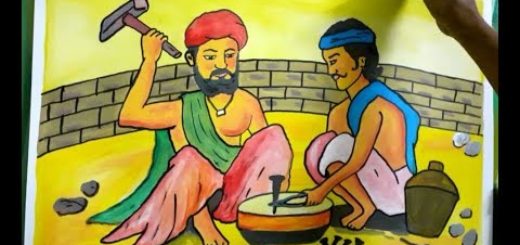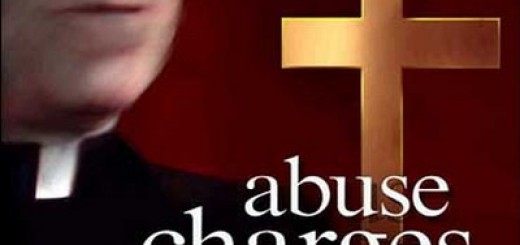Right-Left faces of Catholicism in US! Steve Bannon vs. Pope Francis

By E.J. Dionne Jr. Opinion writer, in Washington Post, February 8, 2017
(Note: Here again we request our readers to carefully study the two images above and repeat what we said in an earlier post: “A picture speaks much more than thousand written words.” More later.
Do you think there are divisions, infightings and even bitter enmities, clashes and collisions in the Catholic Church under Pope Francis who is the embodiment of mercy and compassion? Is it not wrong to say, he rules, governs the Church or Lords it over? Literally, as far as we know, he serves the last, least and the lost in a “poor church for the poor” in order to deserve richly that ever trumpeted title: (Servus servorum) “Servant of servants”.
Whom does he serve? Not the rich and well-to-do but the broken-hearted, homeless refugees on the run, the divorced-remarried, gay people, cohabitants, all the prodigals who ran away from their paternal homes after extracting their parental share. He did it from the very start of his papacy. That is why he started his papacy with the repeated call: “Get out, get out of the church of Sacristy, go out, go to the peripheries, to the no-man’s land, the cherries, the hawalas where people with no address live to befriend them with love and care, without asking any questions, feeding if they are hungry, nursing if they are sick, speaking kindly if they are lonely.
That was the kind of service he was doing in Buenos Aires as bishop and cardinal. He is doing the same even now as Pope to do full justice to his true title “Servant of servants”. That is why he defined his place in his church, the hierarchical pyramid, one step below that of the laity and asked all priests and bishops to look up to the laity to listen and learn from what they have to say, not only because this is the hour of the laity but because they, the laity, know from lived experience the grief’s, sorrows and anxieties, the pains and hardships of people in the streets, much better than the priests and prelates in their cozy air-conditioned comfort zones.
It is against this Pope there is now a widespread campaign by the arch conservatives and traditionalists, both in the church and in politics, both in US and in Europe, especially, in Italy. In US, as we have highlighted many times it is led by Cardinal Burke whose association with Steve Bannon (see photo above and read his factial expression) and his ilk in the political domain as this Washington Post article clearly points out. Are we heading for a split in the Catholic Church between the traditionalists and progressives; between the white status conscious majority who voted for Trump and the slavish minded sweating population who voted for Clinton; between those who worship old overlording Americanism and the new liberal Catholicism; between the promoters of clear-cut rules, regulations and well-defined doctrines and advocates of Pastoral practice of “mercy, compassion and forgiveness” before everything else; as taught and practiced by Francis and his German theologian Walter Gasper? We do not want to say Split. This deviation in the Church started long long ago with the advent of Constantine in the 3rd century, and most of us got addicted to it without knowing how far we have strayed away from the right path.
It was this mistaken direction that Pope John XXIII corrected with his historic second Vatican Council. The Council was called precisely for “course correction” to persuade it to follow the example of a Jesus, not condemning the woman caught in adultery, or the woman at Jacob’s well who had 8 husbands and who became one of the preachers after the encounter with Jesus, or that Mary Magdaline who anointed Jesus’ feet with ointment and will be remembered all through history. What the Church needs today is a Supreme Leader who is a “Pastor Bonus” – a Good Sheperd, like Francis, like Jesus. james Kottoor, editor)
Cover Photo: MANDEL NGAN/AFP/Getty Images US President Donald Trump (L) congratulates Senior Counselor to the President Stephen Bannon during the swearing-in of senior staff in the East Room of the White House on January 22, 2017 in Washington, DC. Now Stephen K. Bannon is chief strategist for Donald Trump. (Chris Kleponis/Bloomberg)
Stephen K. Bannon disrupted American politics and helped elect Donald Trump as president. Will he disrupt the Roman Catholic Church by joining forces with right-wing Catholics who oppose Pope Francis?
Bannon’s dark vision contrasts sharply with the sunny disposition of a pope who has chided “sourpusses” and “querulous and disillusioned pessimists.”
Bannon believes that “the Judeo-Christian West is in a crisis.” He calls for a return of “the church militant” who will “fight for our beliefs against this new barbarity,” which threatens to “completely eradicate everything that we’ve been bequeathed over the last 2,000, 2,500 years.”
According to another report in the Washington Post: Steve Bannon Aligns With Vatican Hard-Liners: “Before becoming White House chief strategist, Bannon — who is Catholic — was the executive chairman of Breitbart News, which he called a "platform for the alt-right." That's a movement associated with white nationalism.
During a visit to Rome a few years ago, Bannon struck up a friendship with the American Cardinal Raymond Burke, a traditionalist who has emerged as one of Pope Francis' most vocal critics. Bannon hired Thomas Williams, an American former priest, as Breitbart News’ Rome correspondent. Williams belonged to the conservative Legion of Christ, which was roiled by scandal when it was revealed its founder had been a pedophile.
Williams recently told his own story on an Italian TV talk show: In 2003, he fathered a child, but he kept it secret until he was outed by a news report. He then left the priesthood and married the child's mother — who is the daughter of the former U.S.ambassador to the Vatican, Mary Ann Glendon.
Where Francis has insisted on dialogue with Muslims, Bannon points to “the long history of the Judeo-Christian West struggle against Islam” and reaches as far back as the eighth century to praise “forefathers” who defeated Islam on the battlefield and “kept it out of the world, whether it was at Vienna, or Tours, or other places.”
“See what’s happening,” Bannon insists, “and you will see we’re in a war of immense proportions.” Pope issues stinging criticism of Burma's treatment of Rohingyas (Reuters)
Bannon offered these comments in 2014 to the Institute for Human Dignity, an ultra-traditionalist group based in Rome and allied with some of Francis’s sharpest internal critics. They include Cardinal Raymond Burke, who has been so tough on Francis that he had to deny he was accusing the pontiff of heresy.
The New York Times’ Jason Horowitz put Bannon’s Catholic project front and center this week with a Page 1 story reporting that during a 2014 visit to Rome for the canonizations of Popes John Paul II and John XXIII, Bannon met and “bonded” with Burke.
Neither Bannon nor Trump (nor, for that matter, Burke) is likely to dent Francis’s immense popularity with American Catholics.
But Horowitz’s story brought into relief the struggle inside the church — and particularly within American Catholicism — over the pope’s stewardship, his emphasis on battling poverty, his insistence on the importance of welcoming immigrants and refugees, and his relative openness to modernity.
Massimo Faggioli, a professor of theology and religious studies at Villanova University and a close student of the Vatican, argues that Francis has aroused a similar hostility among some on the Catholic right to that Barack Obama called forth on the right end of politics generally. Francis is the first pope from Latin America, and his vision of economics is inflected by his experiences there. Moreover, Francis accepts the reforming Second Vatican Council in the 1960s “in its entirety and is not just paying lip service.”
The vast majority of conservative American bishops and Catholic thinkers have, of course, pledged their allegiance to the pope. But Faggioli argues that many of them are often critical of Francis’s attitude toward doctrine (the pope, he says, is “pastoral, not ideological”) and toward Vatican II’s reforms, which shifted church teaching toward a greater respect for religious pluralism.
On the surface, some of Bannon’s economic views would seem to match Francis’s. In his speech broadcast to the group in Rome, Bannon spoke against “a brutal form of capitalism that is really about creating wealth and creating value for a very small subset of people.”
Here's what you need to know about the man who went from being Breitbart News's chairman to Trump's campaign CEO and now to chief White House strategist. (Jenny Starrs/The Washington Post)
But as Faggioli notes, Bannon links his criticism of capitalism to nationalism, which makes his views more similar to those of far-right groups in the 1920s and ’30s such as Action Francaise, a French nationalist group condemned by the Vatican. Francis’s economics, on the other hand, focus on global concerns, including climate change.
Cathleen Kaveny, a professor of law and theology at Boston College, argues that Bannon’s view is also at odds with Catholicism’s tradition of rejecting an “apocalyptic” take on the world. The church, she said, has taught that “you don’t get to God’s Kingdom by blowing up what’s here.”
Trump won overwhelmingly among conservative American Catholics last year, and many of them likely sympathize with aspects of Bannon’s nationalist outlook. But the tensions between Trump and Francis are likely to grow. Ironically, given the opposition to him among many American bishops, Obama’s foreign policy was far closer to the Vatican’s approach than is Trump’s.
And Trump’s moves against refugees and immigrants mobilized even conservative bishops to loud condemnations. The fact that about a third of American Catholics are Latino weighs heavily in the church’s thinking.
Bannon is unlikely to want Trump to force American Catholics to choose between their president and their pope. But the battle is on to define the meaning of both Americanism and Catholicism. Bannon’s worldview could incite the same showdown in the church that he has already ignited in politics.(E.J. Dionne writes about politics in a twice-weekly column and on the PostPartisan blog. He is a senior fellow in Governance Studies at the Brookings Institution, a government professor at Georgetown University and a commentator on politics for National Public Radio, ABC’s “This Week” and MSNBC. He is the author of “Why the Right Went Wrong." Follow @EJDionne)
















